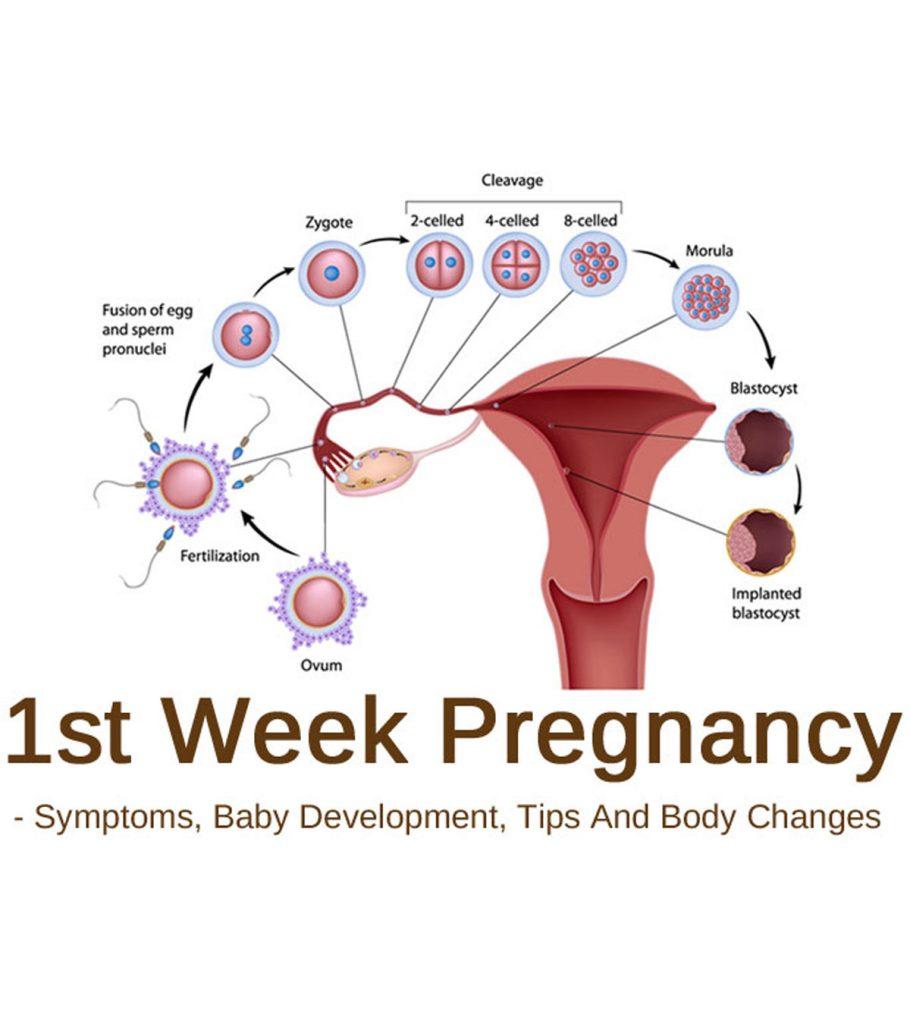
Week 1 of Pregnancy: A Comprehensive Guide
Introduction
Pregnancy is a remarkable journey that begins with a single cell. The first week of pregnancy, also known as the pre-embryonic stage, marks the inception of this extraordinary process. During this crucial week, the foundation for the future embryo is laid, setting the stage for the development of a new life.
Conception: The Spark of Life
The first week of pregnancy commences with conception, the moment when a sperm fertilizes an egg. This momentous event typically occurs in the fallopian tube, where the egg is released from the ovary during ovulation. The sperm, propelled by its tail, navigates the female reproductive tract to reach the egg. Upon contact, the sperm penetrates the egg’s protective layer, triggering a series of biochemical reactions that result in the formation of a zygote.
Zygote: The First Cell of a New Being
The zygote, a single-celled organism, contains the genetic material from both the mother and the father. It is the blueprint for the future embryo and carries the potential for all the unique characteristics of the developing individual. The zygote undergoes rapid cell division, creating a cluster of cells known as the morula.
Morula: A Journey to the Uterus
The morula, consisting of approximately 16 cells, embarks on a journey through the fallopian tube towards the uterus. During this transit, the cells within the morula begin to differentiate, forming two distinct layers: the inner cell mass and the outer trophoblast layer.
Inner Cell Mass: The Origin of the Embryo
The inner cell mass, located at the center of the morula, will eventually give rise to the embryo proper. It contains the pluripotent stem cells, which have the potential to develop into any type of cell in the body.
Trophoblast Layer: Nurturing the Embryo
The outer trophoblast layer, surrounding the inner cell mass, serves as a protective barrier and facilitates the implantation of the developing embryo into the uterine lining. The trophoblast cells secrete enzymes that dissolve the uterine lining, allowing the embryo to embed itself within the uterine wall.
Implantation: A Critical Milestone
Implantation typically occurs around day 6 or 7 of pregnancy. The embryo, now known as a blastocyst, consists of an inner cell mass and a trophoblast layer that has differentiated into two distinct layers: the syncytiotrophoblast and the cytotrophoblast. The syncytiotrophoblast invades the uterine lining, forming connections with the maternal blood vessels. This connection establishes the placental circulation, which will provide oxygen and nutrients to the developing embryo.
Hormonal Changes: Preparing for Pregnancy
The implantation of the embryo triggers a cascade of hormonal changes in the mother’s body. The levels of human chorionic gonadotropin (hCG), a hormone produced by the trophoblast cells, rise rapidly. hCG is responsible for maintaining the corpus luteum, a structure on the ovary that produces progesterone. Progesterone, in turn, prepares the uterine lining for the implantation and maintenance of the pregnancy.
Symptoms: Early Signs of Pregnancy
During the first week of pregnancy, most women do not experience any noticeable symptoms. However, some may experience mild cramping or spotting as the embryo implants into the uterine lining. Fatigue, breast tenderness, and nausea can also occur, but these symptoms typically manifest later in pregnancy.
Conclusion
The first week of pregnancy is a pivotal period that sets the stage for the development of a new life. From the moment of conception to the implantation of the embryo, a series of complex biological processes unfold, laying the foundation for the extraordinary journey of pregnancy. Understanding the events that transpire during this crucial week provides a deeper appreciation for the miracle of human life.